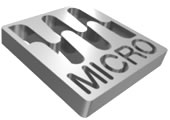|
|
薄膜·中空纖維·粒子 Zeta電位儀 Zeta Potential Analyzer |
|
|
Zetameter - ZetaCompactZeta Potential using micro-electrophoresis technique
Description - PrincipleZetaCompact is a zetameter based on the micro-electrophoresis, i.e. coupling direct observation (microscopy) and particles motion under an applied electric field (electrophoresis). Illumination of the measuring cell is done by a laser sheet or Single Plane Illumination Microscopy generated by the combination of lenses and a laser. This technique allows an observation in a single vertical plane. To determine Zeta Potential, this plane must correspond to the stationary layer which is accurately located and controlled. Particles motion is recorded with a high sensitivty digital camera.
Electrophoretic mobilities distribution is thus measured using a novel tracking algorithm optimized to follow up to 5 000 tracks/sequence. Based on digital images correlation, this algorithm offers a more accurate and sensitive determination of Zeta Potential, either in dilute or semi-diluted systems. SpecificationsZetaCompact measures in live the following parameters, relevant in the determination of Zeta Potential:
ApplicationsNumerous applications of ZetaCompact end-users concern mainly the following activities:
Surface & Large Particles Zetametry based on Streaming Potential Measurement
Overview - PrincipleZetaCAD has been specially designed to automatically determine the Zeta Potential by the technique of streaming potential/current measurement. An electrolyte is forced to pass through a capillary or a porous plug by a pressure gradient. The excess charges around the particles or wall are carried along by the liquid. Their accumulation down stream causes the build-up of an electric field which drives an electric current back (by ionic conduction through the liquid) against the direction of the liquid flow. A steady state is quickly established and the measured potential across the capillary is called the streaming potential.
SpecificationsThis technique concerns mainly samples having large particles (> 50 µm) able to be retain in the cell, or surfacic or fibers samples, where the electrolyte can pass through under a pressure gradient. ZetaCAD gets the followings characteristics:
Applications
Particle size and zeta potential analyzer
Features
Specifications
|
|
|
|
|






